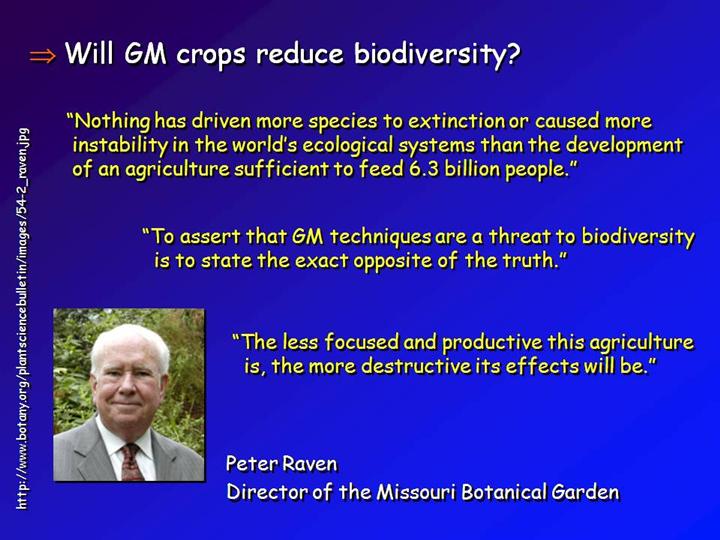| front |1 |2 |3 |4 |5 |6 |7 |8 |9 |10 |11 |12 |13 |14 |15 |16 |17 |18 |review |
 |
On the larger issue of biodiversity, the kind of biological diversity that is preserved in wild ecosystems of all kinds, I quote the words of Peter Raven, director of the Missouri Botanical Garden and tireless champion of biodiversity. He says: “Nothing has driven more species to extinction or caused more instability in the world’s ecosystems than the development of an agriculture sufficient to feed 6.3 billion people.” It is important to know what this means for biodiversity in the future. The world’s human population is expected to grow to somewhere in the neighborhood of 9 billion people in the coming decades. But, the amount of farmland hasn’t changed in 50 years because we are losing good cropland to desertification, salinization, and urbanization as fast as we are adding it by chopping down species-rich tropical forests. The choice comes down to biodiversity or food, unless we can grow more on less land. Raven further says: “To assert that GM techniques are a threat to biodiversity is to state the exact opposite of the truth. The less focused and productive this agriculture is, the more destructive its effects will be.” What means is that if we want to preserve biodiversity, we have to grow more food, quite a lot more, on the land we already cultivate. http://www.botany.org/plantsciencebulletin/images/54-2_raven.jpg |